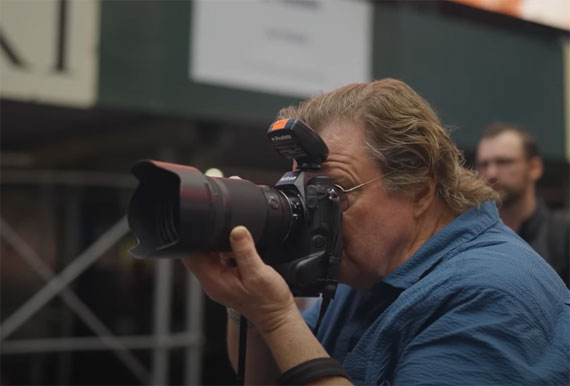When we think of storytelling, movies, documentaries, and videos typically spring to mind. However, photography can also tell a tale — particularly if you know how to leverage still images to this effect. As a renowned photojournalist with over three decades of experience under his belt, Joe McNally has some insights to share.
He’s shot for the likes of National Geographic, Sports Illustrated, and TIME and commercially for Nikon, ESPN, and Sony. Often labeled “a generalist,” his diverse background has helped him master his camera. In this YouTube video tutorial for Adorama TV, he details his storytelling photography process.
Be Loyal To Your Gear
Joe has always used Nikon cameras, lenses, and photographic equipment, starting off with film cameras. Then ascending to DSLR, and now to mirrorless. His Nikon Z9 is the jewel in his collection, though we’re sure he’s more than ready to upgrade with the times.
As a master of flash and lighting, he also knows how to leverage artificial light — be it from on- or off-camera flash, strobe lights, hot lights, or modifiers. Being compact, lightweight, and portable, speedlights are amongst his favorite gear, as he tends to travel a lot for work.
As far as post-production goes, Joe prefers to start and end at the click of the shutter. Having learned with film, he’s a master at getting the most out of raw images. That said, he prefers to use Capture One editing software if he absolutely has to. He also sends his images to a professional retoucher for the final edits.
Do Your Research
An avid reader of comic books, Joe credits his unique take on photographic composition and process to this passion. Not only that. He was also inspired both by the coloring and still-life storytelling aspect therein. Just like characters in a comic book, each of the subjects he photographs has a story to tell.
What I wanted to do photographically; I wanted to chase down good stories. I’ve always been interested in human beings, who they are, what they do. I’m a very curious person, especially so when I have a camera in my hand…
As such, Joe always does extensive research on his subject before even picking up his camera. He’s sure to look at the project from as many angles as possible, taking time to think about his approach. If available, he also digs into any supplementary materials, such as travel writing, poetry, and music, to get inspired.
Plan Big (and Ahead)
Joe thinks big when shooting, making a full production out of his projects. His process includes sketching and planning out the details, including the crew needed, as well as any additional equipment. His client is also in the loop, having sketched ideas passed by them before production.
As such, Joe usually has a lot more to coordinate than just himself and his camera. For his most challenging project, he captured a cat burglar escaping a museum with priceless jewels, a la James Bond. Taken at the Museum of Ethnography in Budapest, the image was commissioned for the release of the Nikon D850 camera.
The real difficulty was lighting up the museum, as he could only shoot at night when it was closed. To solve the issue, Profoto — another of his favorite lighting systems — 2400w strobe lights were suspended on cranes outside the windows. Even more challenging, the shoot also included anchoring statues in such a way as to look like they were falling over.
Wrapping Up
I’ve always counseled photographers to find something that they feel is so beautiful that they can’t help but shoot it…
Working with the ethos of balancing both passion projects with well-paid ones, Joe has been exposed to it all. By doing so, he has achieved a level of mastery, both in technical proficiency and conceptualization. His advice is to shoot what you love but also push yourself by taking on different projects and planning extensively.
Like This Article?
Don't Miss The Next One!
Join over 100,000 photographers of all experience levels who receive our free photography tips and articles to stay current:






